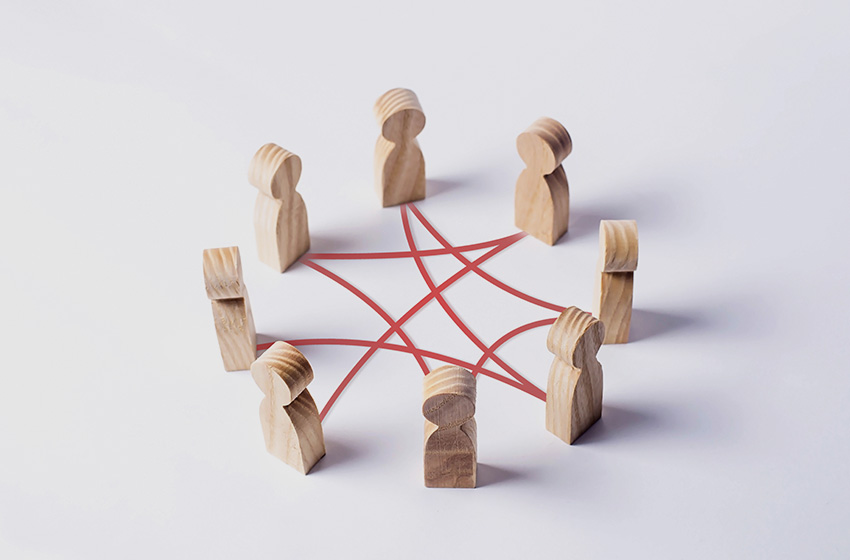How can neighborhoods gentrify without erasing their heart and voice?
It’s an important question to ask now, I’d suggest, since many communities across the U.S. are at risk of losing their historical identities as new people and businesses move in, displacing residents and affecting the fabric of the community. This process is known as gentrification, and while a neighborhood “upgrade” can bring new vitality, diversity and opportunity, that is a win only if existing residents and businesses are not forced or priced out.
How to have the positive effects without the negatives isn’t obvious. President Joe Biden’s 2023 budget proposes a US$195 million increase in the Community Development Block Grant program that targets development in 100 underserved communities. By creating infrastructure that attracts new development, some of these projects will likely support gentrification.
I’m an educator, arts administrator and public policy fellow who has worked with Fortune 500 companies and exhibited my own photography nationally. I teach fine arts classes at Rutgers in Newark, New Jersey, where I was raised.
As an artist, I believe that it is important to preserve diverse communities with unique characteristics. Public art is one way to highlight and honor our shared spaces even as we reshape them. Art can help present the values that communities want to project and protect as a way of maintaining and creating great places to live.
What makes a great place to live?
Or, as urban planner Maria Rosario Jackson – now serving as chair of the National Endowment for the Arts – asks: What makes “a just place where people can thrive”?
The answer is, many elements working together. Accessible transportation, diverse housing stock, good schools and jobs, to name a few. Places and spaces in which visitors and residents can convene and connect, be entertained, engage creatively, and find experiences that expand and challenge imaginations.
Public art projects are at the center of many revitalization projects, and they are crucial to the fabric and vitality of their communities. Consider as just one example Underground at Ink Block in Boston, a project that transformed an ordinary underpass into a place where neighbors come together to honor shared histories and play, connect and create community surrounded by outstanding street art.
Successful projects like this one don’t just happen. Rather, urban planners and community leaders rely on proven techniques that bring them together with community members to practice what urban planners call placemaking, creative placemaking and placekeeping.
Placemaking entered into the urban planning vocabulary in a 2010 white paper by Ann Markusen and Anne Gadwa for The Mayors’ Institute on City Design.
More recently, the Project for Public Spaces published a Primer on Placemaking in 2022 titled “What if we build our cities around places?”
The paper argues that successful cities need destinations: strong communities with distinct identities to help attract new residents, businesses and investment.
Walkable, safe, comfortable and dynamic public spaces and buildings are key components to the creation of spaces where “people want to live, work, play and learn,” as Michigan State University urban planner Mark Wyckoff argues.
Placemaking began as an economic development strategy focusing on “economic districts,” but recent shifts also call for thoughtful and sensitive social impact focusing on what residents and commuters want, like cultural activities, accessible parks, and healthy and sustainable food sold at farmers markets.
Creative placemaking connects traditional economic placemaking with arts and cultural strategies. Markusen and Gadwa explain that creative placemaking involves partnering with the community to re-imagine a neighborhood while maintaining its social and cultural character.
Movements such as Socially Engaged Art allow artists and community to come together in a public space that encourages conversation around a common goal. Rick Lowe’s Project Row Houses in Houston and the Dorchester Art and Housing Collaborative’s Theaster Gates in Chicago are just two of many examples of this blurring of the lines between art, activism and economic development.
More recently, the idea of placekeeping expands on these earlier concepts by recognizing that having communities at the table when revitalization projects are being planned is key to growing urban environments that have a good chance of keeping displacement at bay. Placekeeping emphasizes learning what is important to the fabric of the community and how to weave that into revitalization projects.
A former mayor of Oakland, California, Libby Schaaf, said in 2019: “Placekeeping is about engaging the residents who already live in a space and allowing them to preserve the stories and culture of where they live.”
Oakland was one of the participants of Bloomberg Philanthropies’ Asphalt Art Initiative. This 10-city program has the goal of assisting “cities looking to use art and design to improve street safety, revitalize public spaces, and engage their communities.”
Here in Newark, New Jersey, Audible, an audiobook and podcasting subsidiary of Amazon, has led a dynamic partnership with local leaders, elected officials, stakeholders, residents and artists called the Newark Arts Collaboration. The installation takes the form of 13 murals reflecting the vibrancy and histories of the city’s neighborhoods and the people within them.
The best way of knowing what a community values is to ask the people who live there.
Community benefits agreements are contracts that bring community groups and stakeholders to a shared planning table. These agreements provide negotiated, binding contracts that help leverage tools such as tax assistance programs and reinvestment funds with concrete community investment plans.
For example, in Pittsburgh, community benefits agreements provided an opportunity for the community and developers to co-shape major revitalization projects beginning with the PPG arena 2008 and expanding with the renovation of the historic New Granda Theater in 2023.
Any anti-gentrification effort begins with an inclusive process. Under Mayor Michelle Wu, the city of Boston provides another example of placekeeping by promising to learn “what exists, what is treasured and what contributes to the unique characteristics of Allston-Brighton,” a quickly developing neighborhood within the city.
Embracing the heart of the community, honoring its artistic expression, and creating access for the community was key in the development of Frogtown Arts Walk in Los Angeles. And keeping this regeneration equitable is center to Newark’s cultural plan.
To quote Newark Mayor Ras Baraka: “Newark should be the place to be for artists. And, I want Newarkers to benefit from their presence.”
This article is republished from The Conversation, an independent nonprofit news site dedicated to sharing ideas from academic experts. The Conversation is trustworthy news from experts, from an independent nonprofit. Try our free newsletters.
Read more: Housing and heritage aren’t mutually exclusive – a few basic rules can help get the balance right Is your city making you fat? How urban planning can address the obesity epidemic
Anthony Alvarez does not work for, consult, own shares in or receive funding from any company or organization that would benefit from this article, and has disclosed no relevant affiliations beyond their academic appointment.








